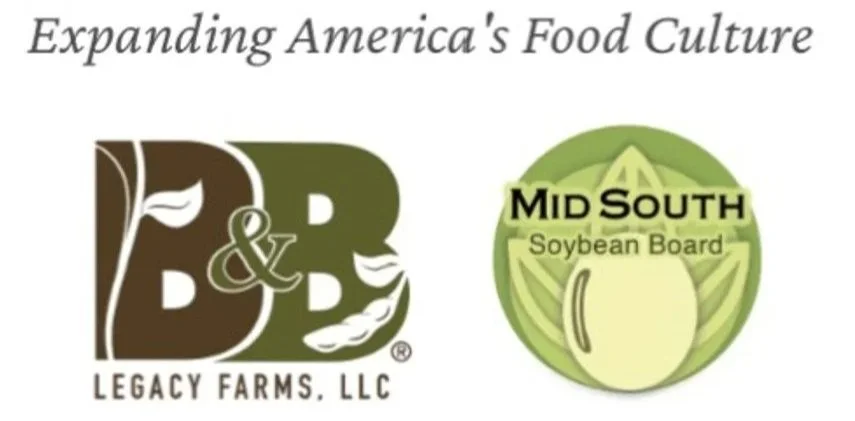Kid-Friendly Soy: Nutrition Made Easy
“American children are developing diet-related diseases at alarming rates. Obesity now affects millions, increasing the risk for diabetes, heart disease, and even early mortality”
Soy delivers nutrition, savings, and allergy-friendly flexibility.
Adding whole soy foods to school menus supports better nutrition at a lower cost, all while helping meet diverse dietary needs and sustainability goals.
Fifteen minutes. One powerful story.
Find out why this ancient U.S.-grown bean might be a good choice for our kids.
What We Feed Our Children Matters
“The catastrophic consequences of the surge in overweight and obesity among children are already evident in the rising prevalence of childhood hypertension and type 2 diabetes.”
Overweight and obesity can trigger serious health conditions, many of which are now occurring at younger ages, including diabetes, heart attacks, stroke, cancer, mental health disorders, and even premature death.
Good news? School nutrition programs can make a real difference!
By including soy, schools can help shift the health trajectory for the next generation. Adding whole soy foods to school menus supports better nutrition at a lower cost, all while helping meet diverse dietary needs and sustainability goals.
Finally, a dairy-free option that meets the standard and is WIC-approved!
Dietitians consistently rank soy milk among the healthiest plant-based milks — and it’s the only one approved for use in the USDA WIC program for children.
Beyond its strong nutrition profile, soy can actually taste good! Taste tests confirm that whole and minimally processed soy foods are well-accepted by kids and teens nationwide.
Kids Approve: Soy Passes the Taste Test
Recent taste tests and sensory evaluations of whole and minimally processed soy foods — conducted with 1,280 children, adolescents, and adults across five states (2022–2023) — show that soy isn’t just nutritious, it’s popular.
Ninety-seven percent of student participants (grades 7–12) said they would like soy foods added as a school snack or lunch option (Ballard, 2025).
(Reference: Ballard, K. (2025). Whole Soy Food Acceptability and Market Viability Study: Consumer Results Summary. Mid-South Soybean Board Report, B & B Legacy Farms.)
Plant-Powered Kids: A Guide to Soy in School Nutrition Programs
Soy’s mild flavor allows you to use it as a dairy-free alternative for food like:
smoothies
soups & sauces
oatmeal or baked goods
Smart Swaps = Healthier School Meals
Want to boost nutrition, cut costs, and support diverse dietary needs? Use our Smart Swaps guide to learn how!
Soy foods are easy to use and credit in child nutrition programs:
Vegetable and Protein:
Serve cooked dry soybeans and edamame as entrées or sides. Add soybeans or tofu to soups, casseroles, or as toppings for salads and dressings.
Dairy-Free Alternatives:
Soy milk, tofu, soy yogurt, sour cream, cream cheese, and ricotta blend easily into everyday recipes as simple swaps for dairy.
Smart Snacks:
Roasted soy nuts and soy nut butter make satisfying, high-protein, dairy-free options for breakfast, snacks, or lunchboxes.
Millions of Students Depend on School Breakfast and Lunch Programs
In 2022, over 60% of all public school students received a free or reduced-price lunch through the National School Lunch Program.
This was over 30.1 million students.
Over 14.3 million children also participated in the School Breakfast Program (SBP) on an average school day during the 2022–2023 school year. (www.frac.org)
What is missing from their plates?
Whole and minimally processed soybeans — a powerful, nutrient-dense food that delivers high-quality protein, fiber, and essential minerals!
What Soy Brings to the Table:
Complete Protein Powerhouse: Contains all 9 essential amino acids — 31g per cup.
Nutrient-Dense: Naturally rich in iron, calcium, and fiber for healthy growth and digestion.
Heart Healthy: Low in saturated fat, cholesterol-free, and full of omega-3s.
Plant-Based Benefits: Antioxidants and polyphenols support gut health and blood sugar control.
Budget-Friendly: Long shelf life and versatility reduce waste and costs.
Soy is the only bean that’s a complete protein — no pairing needed.
Explore Free Nutrition Education & Continuing Education Credits (CEUs)
Nutrition professionals can earn CEUs through the Soy Nutrition Institute Global’s Soy Connection program:
Soy Connection Newsletter: 0.5–1.0 CPEU per issue
Eligible for: Registered dietitians, dietetic technicians, certified dietary managers, and food protection professionals














